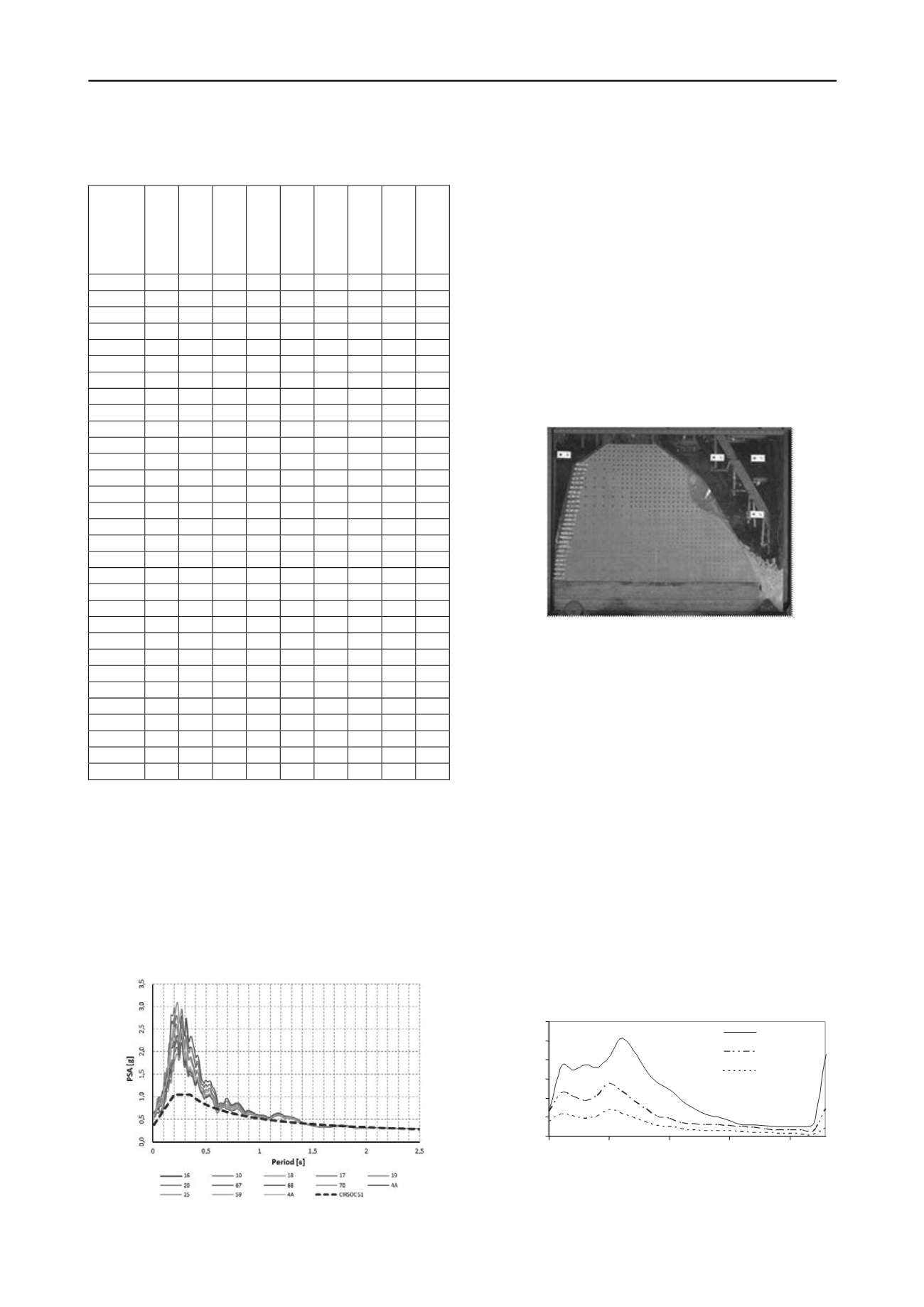
1392
Proceedings of the 18
th
International Conference on Soil Mechanics and Geotechnical Engineering, Paris 2013
Table 1. Link between the various papers and the different topics: the
main topic is identified by a capital bold
X
and secondary topics by a
ower case non-bold x.
l
themes
\
papers
site effects
landslides
in situ tests
behav/liquef
earth works
improvemt
isolation
foundations
modelling
1676
x
X
1697
x
X
x
1745
x
X
x
1759
X
x
x
1766
X
1878
X
1886
x
X
2072
X
2080
X
x
x
2153
X
x
x
2250
X
2293
X
x
x
2299
X
2337
x
X
x
2360
X
2441
X
x
2571
x
X
x
x
2628
x
X
x
2630
X
x
2751
X
x
2818
X
x
2846
X
x
2895
X
x
2918
X
x
2932
X
3013
X
x
3031
X
3052
x
X
3064
x
X
3065
x
x
X
3086
X
x
x
1.2
Seismic hazard in urban areas
In paper #3086 by Barchiesi et al., seismic site effects in the
urban area of Mendoza (Argentina) are computed from velocity
profiles derived from SPT correlation equations. Accounting for
the local seismicity, maps of surface amplifications and design
spectra are then plotted. As shown if Fig.2, for Zone 2 (shallow
sands and silts overlaying gravels with high sehar wave
velocity), the computed response spectra are much larger than
the design spectrum for such a site. Strong site effects are thus
expected in this area and depend on both the velocity contrast
and the excitation level.
Figure 2: Response spectra in Mendoza (Z2, CIRSOC103, Ao = 0.35g)
Paper #2932 by Kegyes-Brassai et al. deals with a rapid seismic
assessment of a large number of buildings using a forecasting
approach. The steps involve the determination of the hazard and
the computation of building vulnerability (bilinear approxima-
tion of the capacity curve). Damages can then be estimated from
expected PGAs in a given area.
2 LANDSLIDES
Only one paper (#2250) is dedicated to landslides triggered by
earthquakes. In this paper, Shinoda et al. discuss shaking table
tests of a large slope model subjected to vertical and horizontal
seismic loading. Both sinusoidal and actual seismic excitations
are considered. As shown in Fig.3, the results clearly show that
a critical direction of the vertical and horizontal accelerations
exists, which is a factor to decrease the slope stability. This
critical direction of acceleration is generally found to be parallel
to the slope inclination.
Figure 3. Slope failure under recorded seismic excitation, Shinoda et al.
3 IN SITU TESTS
Two papers are proposed on this topic: one on soil
characterization and one on pile tests.
Paper #2818 by Fourie at al. discusses the interest of the
PANDA penetrometer to estimate the relative density of soils,
which is a useful indication of liquefaction susceptibility. This
paper describes an approach for managing upstream TSFs
(Tailings storage facilities) using the PANDA for regular in-situ
testing (coupled with laboratory compressibility measurements).
The PANDA penetrometer is used to characterize the initial
state and predict the future state of tailings once buried to a
significant depth. The sensitivity to the moisture content
requires further researches in order to assess the liquefaction
susceptibility in a reliable way.
In paper #2918, Rinaldi et al. present pseudostatic load tests
to evaluate the bearing capacity of large diameter piles. The
performed tests show that using moderate loads (10 to 20 tons
falling from 10 cm to 120 cm) allows to reach more than 800
tons of loading and the full mobilization of the pile ultimate
capacity. The distribution of reaction forces along the pile shaft
is shown in Figure 4.
0
200
400
600
800
1000
1200
1
6
11
16
21
Depth [m]
Reaction Force [kN]
[kN]
2.8m
2.6m
2.2m
Figure 4: Distribution of reaction forces along the pile shaft obtained
from the solution of the wave equation for different drop height of the
mass (Rinaldi et al, #2918).


